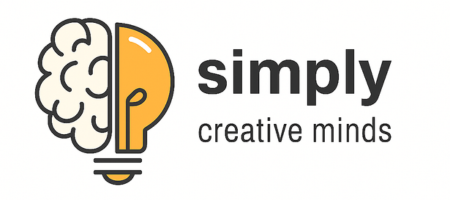
1. What is a Web Service?
Answer:
A web service is a standardized way of allowing two applications or devices to communicate over the internet. It uses open protocols like HTTP and XML or JSON to enable communication between systems, regardless of the underlying platforms or languages.
2. What are the types of Web Services?
Answer:
The two main types are:
- SOAP (Simple Object Access Protocol): A protocol-based service using XML for communication.
- REST (Representational State Transfer): An architectural style that uses standard HTTP methods and is often used with JSON or XML.
3. What is the difference between SOAP and REST?
Answer:
| Feature | SOAP | REST |
|---|---|---|
| Protocol | Protocol-based | Architectural style |
| Format | XML only | JSON, XML, HTML |
| Transport | Supports multiple protocols (HTTP, SMTP) | HTTP only |
| Performance | Slower (verbose) | Faster (lightweight) |
| Standards | WSDL, WS-Security | No official standards |
4. What are the main components of a SOAP message?
Answer:
A SOAP message consists of:
<Envelope>– The root element.<Header>– Optional metadata.<Body>– Actual message content.<Fault>– Optional error information.
5. What is WSDL?
Answer:
WSDL (Web Services Description Language) is an XML-based language used to describe the functionality offered by a SOAP web service, including methods, parameters, and access points.
6. What is UDDI?
Answer:
UDDI (Universal Description, Discovery, and Integration) is a platform-independent framework for discovering and publishing information about web services in a directory-like structure.
7. What are HTTP methods used in RESTful Web Services?
Answer:
- GET – Retrieve data
- POST – Create new resources
- PUT – Update existing resources
- DELETE – Remove resources
- PATCH – Partial update of resources
8. What is RESTful Web Service?
Answer:
A RESTful web service follows REST principles and uses HTTP for communication. It represents data as resources (URIs), and operations are performed using standard HTTP methods.
9. What is the difference between PUT and POST in REST?
Answer:
- POST is used to create a new resource (server generates the URI).
- PUT is used to create or update a resource at a known URI (client provides the URI).
10. What are the advantages of REST over SOAP?
Answer:
- Lightweight and faster
- Uses standard web protocols (HTTP)
- Easier to implement and test
- Better support for caching and statelessness
- Preferred for mobile and web applications.
11. What does it mean that REST is stateless?
Answer:
Stateless means that each request from the client to the server must contain all the information needed to understand and process the request. The server does not store any session state about the client between requests.
12. What is idempotency in RESTful Web Services?
Answer:
Idempotency means that making multiple identical requests results in the same server state (no side effects beyond the first call).
- GET, PUT, DELETE, and HEAD are idempotent.
- POST is not idempotent.
13. What is a resource in REST?
Answer:
In REST, a resource is any piece of content or data (e.g., user, article, product). Each resource is identified by a unique URI, and operations are performed using HTTP methods.
14. What formats are supported in RESTful web services?
Answer:
RESTful services typically support:
- JSON (most common)
- XML
- HTML
- Plain Text
The format is usually specified in the Content-Type and Accept HTTP headers.
15. What are the key characteristics of REST architecture?
Answer:
- Stateless communication
- Client-server architecture
- Cacheable responses
- Uniform interface (standard HTTP methods)
- Layered system
- Resource-based URIs
16. How is authentication handled in web services?
Answer:
Authentication methods include:
- Basic Authentication (with HTTPS)
- Token-based Authentication (e.g., JWT)
- OAuth 2.0 (for delegated access)
- API keys (simple but less secure)
17. What is OAuth?
Answer:
OAuth is an open standard for access delegation. It allows users to grant third-party applications limited access to their resources without sharing credentials (commonly used in login with Google/Facebook).
18. How does HTTPS improve web service security?
Answer:
HTTPS encrypts the data exchanged between the client and the server using TLS (SSL), protecting against eavesdropping, tampering, and man-in-the-middle attacks.
19. What is a URI vs a URL in web services?
Answer:
- URI (Uniform Resource Identifier) identifies a resource, either by name, location, or both.
- URL (Uniform Resource Locator) is a type of URI that includes the location (e.g., protocol + domain + path).
20. What is content negotiation in REST?
Answer:
Content negotiation allows the client and server to agree on the format of the response (e.g., JSON or XML) using the Accept header in the request. The server then returns the content in the preferred format if supported.
21. How do you handle errors in RESTful web services?
Answer:
Errors are typically handled using HTTP status codes:
- 4xx codes indicate client errors (e.g., 400 Bad Request, 404 Not Found).
- 5xx codes indicate server errors (e.g., 500 Internal Server Error).
Additionally, the response body can provide error details in JSON or XML format.
22. What is API versioning and why is it important?
Answer:
API versioning manages changes to the API without breaking existing clients. It can be implemented via URI (e.g., /v1/resource), request headers, or query parameters. It ensures backward compatibility.
23. What is caching in web services and how is it implemented?
Answer:
Caching stores copies of responses to improve performance and reduce server load. It’s implemented using HTTP headers like Cache-Control, Expires, and ETag.
24. What is SOAP and what are its advantages?
Answer:
SOAP (Simple Object Access Protocol) is a protocol for exchanging structured information using XML. Advantages include strict standards, built-in error handling, extensibility, and support for complex operations.
25. What is the role of SOAP headers?
Answer:
SOAP headers carry metadata like authentication credentials, transaction management, or routing information. They are optional but essential for message processing beyond the main body.
26. What is meant by ‘loosely coupled’ in web services?
Answer:
Loosely coupled means clients and services interact with minimal dependencies. Changes to one component (e.g., internal service logic) don’t require changes to others, allowing flexibility and scalability.
27. What is a SOAP fault?
Answer:
A SOAP fault is an error message returned in the <Fault> element when a SOAP request fails. It contains information like fault code, fault string, and details about the error.
28. What is the difference between synchronous and asynchronous web services?
Answer:
- Synchronous: Client waits for the server to process and respond (blocking).
- Asynchronous: Client sends a request and continues without waiting, later receiving a response via callback or polling.
29. What are the limitations of SOAP?
Answer:
- Verbose XML messages lead to slower performance.
- More complex to develop and maintain.
- Less suited for browser-based applications.
- Requires strict adherence to standards, which can limit flexibility.
30. What is meant by ‘Idempotency’ in web services?
Answer:
Idempotency means that multiple identical requests have the same effect as a single request, ensuring consistency, especially important for retrying requests without unintended side effects.
31. What is WS-Security?
Answer:
WS-Security is a SOAP extension that adds security features such as encryption, digital signatures, and authentication tokens to SOAP messages, ensuring message integrity and confidentiality.
32. What is the difference between XML-RPC and SOAP?
Answer:
XML-RPC is a simple protocol using XML to encode remote procedure calls, whereas SOAP is a more complex protocol with extensible standards, supporting WS-* specifications and more advanced features.
33. How can you secure RESTful Web Services?
Answer:
Common methods include HTTPS, token-based authentication (JWT), OAuth 2.0, API keys, input validation, and rate limiting to protect from unauthorized access and attacks.
34. What is meant by “statelessness” in REST?
Answer:
Each REST request contains all information needed to process it; the server does not retain session state between requests, making REST scalable and simple.
35. How do you test Web Services?
Answer:
Using tools like Postman, SoapUI, or curl commands to send requests and validate responses; unit testing frameworks and automated API testing tools are also widely used.
36. What is a RESTful API endpoint?
Answer:
It’s a specific URI where REST resources are accessible. Endpoints accept HTTP methods to perform operations like GET, POST, PUT, DELETE on resources.
37. What are some common HTTP status codes returned by Web Services?
Answer:
- 200 OK (Success)
- 201 Created (Resource created)
- 400 Bad Request (Client error)
- 401 Unauthorized (Authentication required)
- 404 Not Found (Resource not found)
- 500 Internal Server Error (Server error)
38. What is an API Gateway?
Answer:
An API Gateway acts as a single entry point for multiple backend services, handling request routing, composition, rate limiting, authentication, and logging.
39. What is HATEOAS in REST?
Answer:
HATEOAS (Hypermedia As The Engine Of Application State) means REST responses include links to related resources or actions, guiding clients dynamically through the API.
40. What is SOAP binding?
Answer:
SOAP binding defines how SOAP messages are transported over protocols such as HTTP, SMTP, or TCP, specifying message format and communication style (document or RPC).
41. What is throttling in web services?
Answer:
Throttling limits the number of API requests a client can make in a given time frame to prevent overload and ensure fair usage.
42. What is SOAP message encoding?
Answer:
SOAP messages are encoded in XML format, which defines the structure and data types used to serialize the information in the message.
43. How do REST and GraphQL differ?
Answer:
REST uses fixed endpoints and returns fixed data structures, whereas GraphQL allows clients to request exactly the data they need via flexible queries, reducing over-fetching and under-fetching.
44. What are microservices and how do web services relate to them?
Answer:
Microservices are small, independent services that communicate over web services APIs (usually RESTful) to build scalable, modular applications.
45. What is SOAP Action?
Answer:
SOAP Action is an HTTP header that indicates the intent of the SOAP HTTP request, helping the server route the request to the appropriate method.
46. How do you implement versioning in REST APIs?
Answer:
Versioning can be implemented via URL paths (/v1/resource), request headers (Accept), or query parameters (?version=1).
47. What is meant by message contract in web services?
Answer:
Message contract defines the structure of the messages exchanged between the client and server, including data types and elements, ensuring interoperability.
48. How can you improve web service performance?
Answer:
Use caching, minimize payload size, optimize database queries, use compression (gzip), and implement load balancing and efficient connection management.
49. What is the difference between synchronous and asynchronous communication in web services?
Answer:
Synchronous communication waits for a response before proceeding, while asynchronous communication sends a request and continues without waiting, often using callbacks or messaging queues.
50. What are some best practices for designing web services?
Answer:
- Use RESTful principles where possible
- Maintain statelessness
- Use consistent and meaningful URIs
- Implement proper error handling
- Secure APIs using HTTPS and authentication
- Document APIs clearly (e.g., with Swagger/OpenAPI)
- Support versioning
- Optimize for performance and scalability


